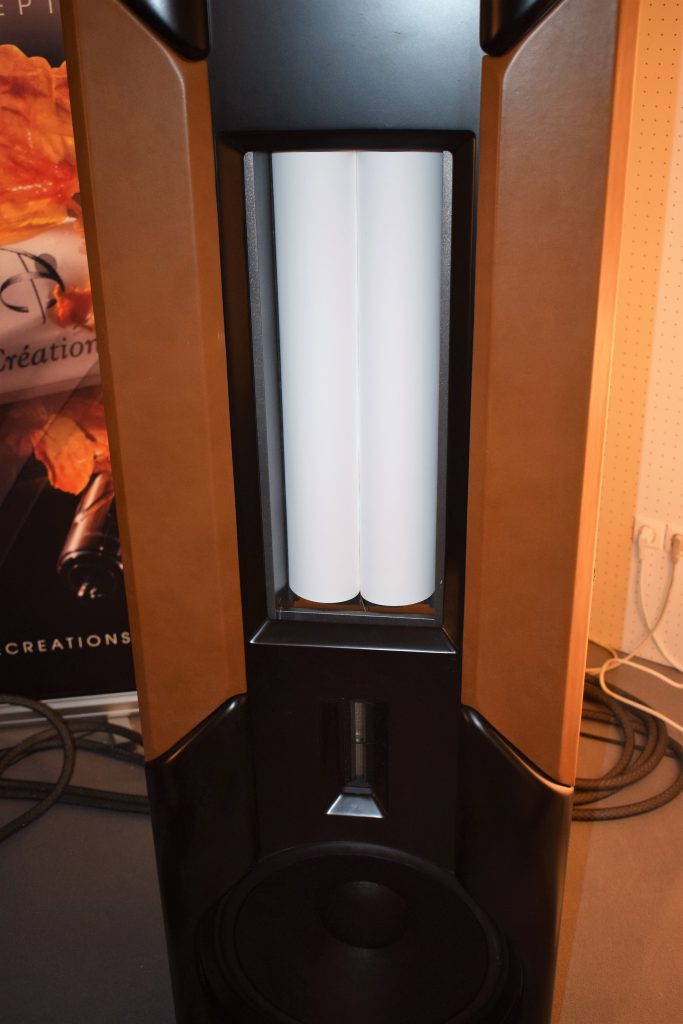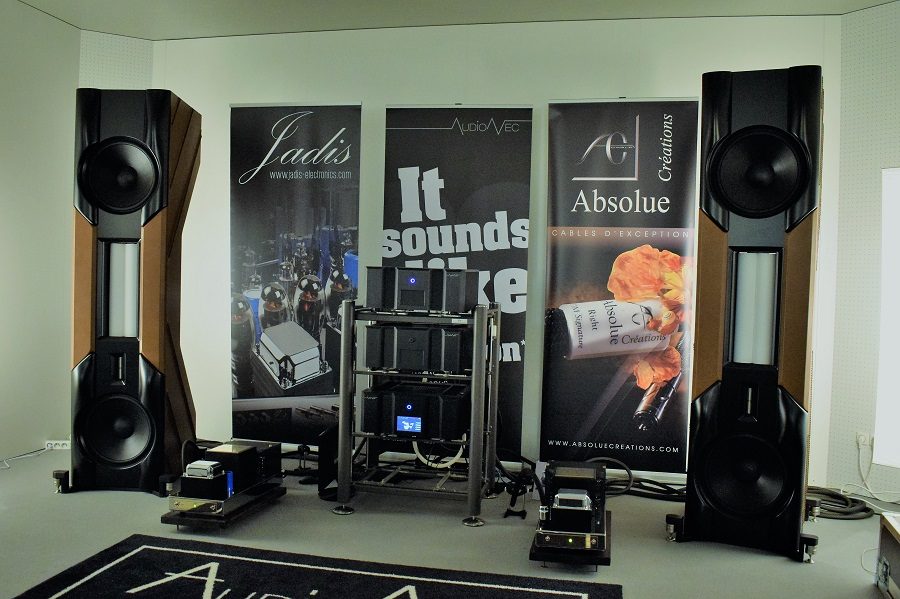Although the Munich fair is flooded with mind-blowing amps, players, cables and accessories, and no system will do without them, it is often by the loudspeakers that people remember the systems and rooms, one obvious reason being that, at the Munich Show especially, the physically memorable speakers often occupy a major part of the available exhibition space.
With the height of 170cm, the PMC’s new Fenestrias aren’t that big in the context, but equally impressive with their atypical cabinet and new drivers, aerodynamics and vibration damping. The Fenestria is a completely passive three-way transmission liner (2 x 2.4 m channels) featuring the 19.5 mm Sonomex tweeter and the new, acoustically transparent 75mm dome for the mid-range – the heart of the speaker. From 23Hz up there are TL-loaded 165 mm carbon fiber woofers, also contributing to the life-like dynamics of the system.
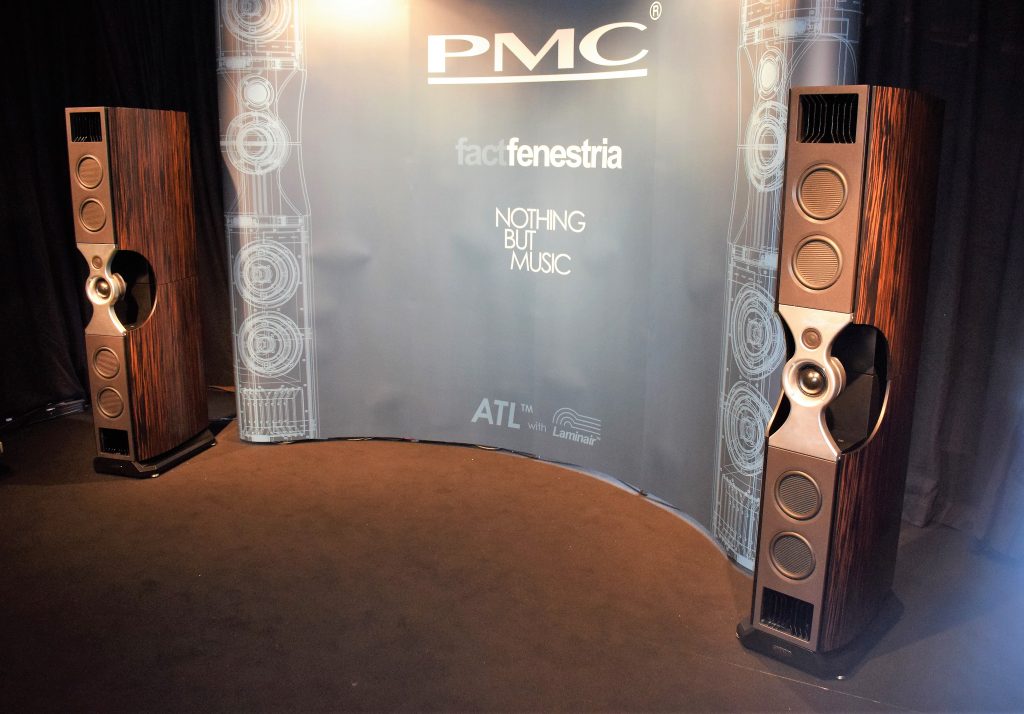
Triple the price of the Fenestrias and you’ll get the Eminence, the new flagship model by Wilson Benesch. The Eminence sports the latest version of the WB Fibonacci tweeter, the crossoverless midrange and a series of 170 mm Tactic 3.0 woofers, all housed in “the most advanced Wilson Benesch enclosure ever built”. A house sound? Definitively.
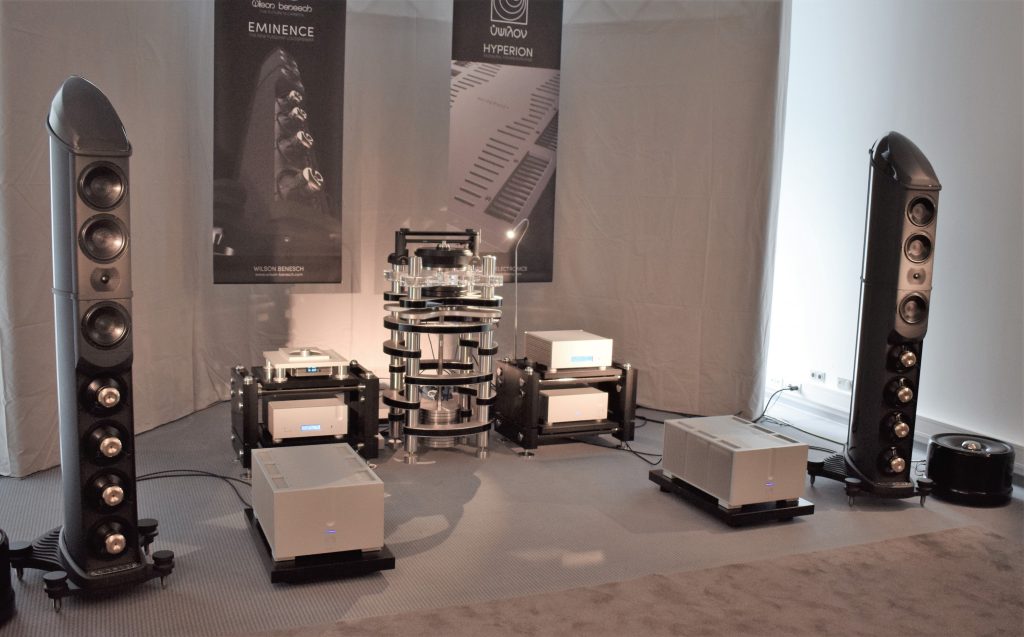
Double that price of the Eminence and you’ll arrive at the Marten Coltrane Momento 2, a new bold 4-way speaker with the diamond tweeter, ceramic mid-range units and six 8 inch woofers in a composite cabinet plus four 10 inch passive radiators on the back side, all mildly crossed as usual in Marten’s speakers. As far as I’m concerned, all the three speakers above are true highend speakers, by any criteria, and will certainly win the heart of wealthy enough hobbyists. But at the same time these speakers fall height category. Anywhere else they would qualify for the center position but in Munich their height of “just” 160-180 cm is not enough alongside the >2m towers, which there were many.
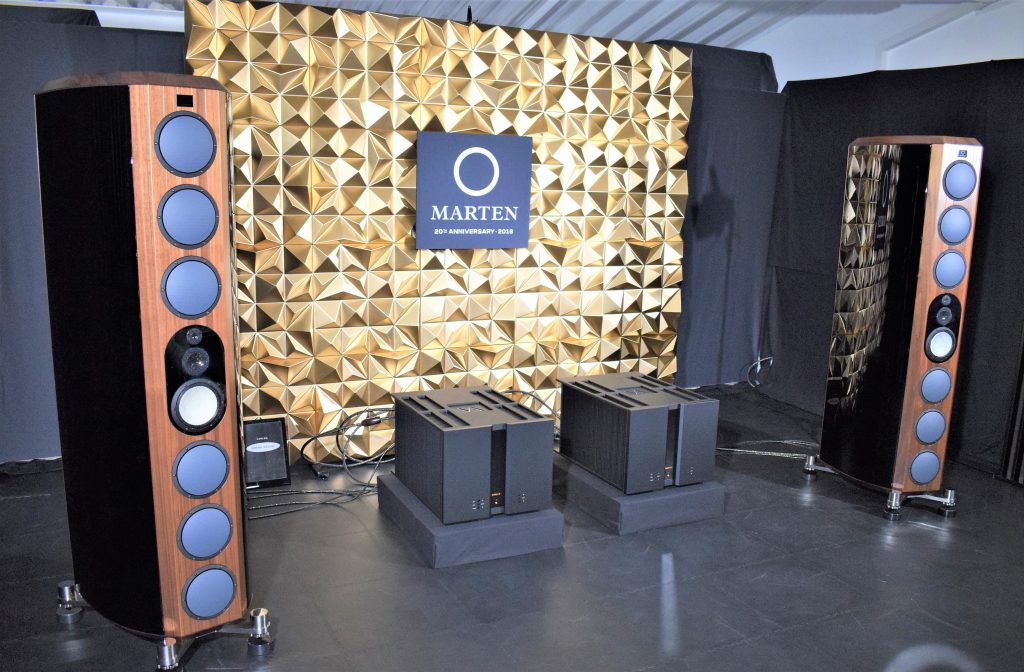
Mammoths
The mighty Focal Grand Utopia, now in its new Evo III version, qualifies in the >2m category by 1,2 cm (201,2 cm). Only in Munich the Grand Utopias look grand but not that grand, for instance next to Goebel’s Divin Majestics (pictured here with the CH Precision M1 amplifiers). When I visited this room, there was some opera recording on the platter of the Kronos turntable (or perhaps CD), and yes, there was enough of the required scale for the choral scene.
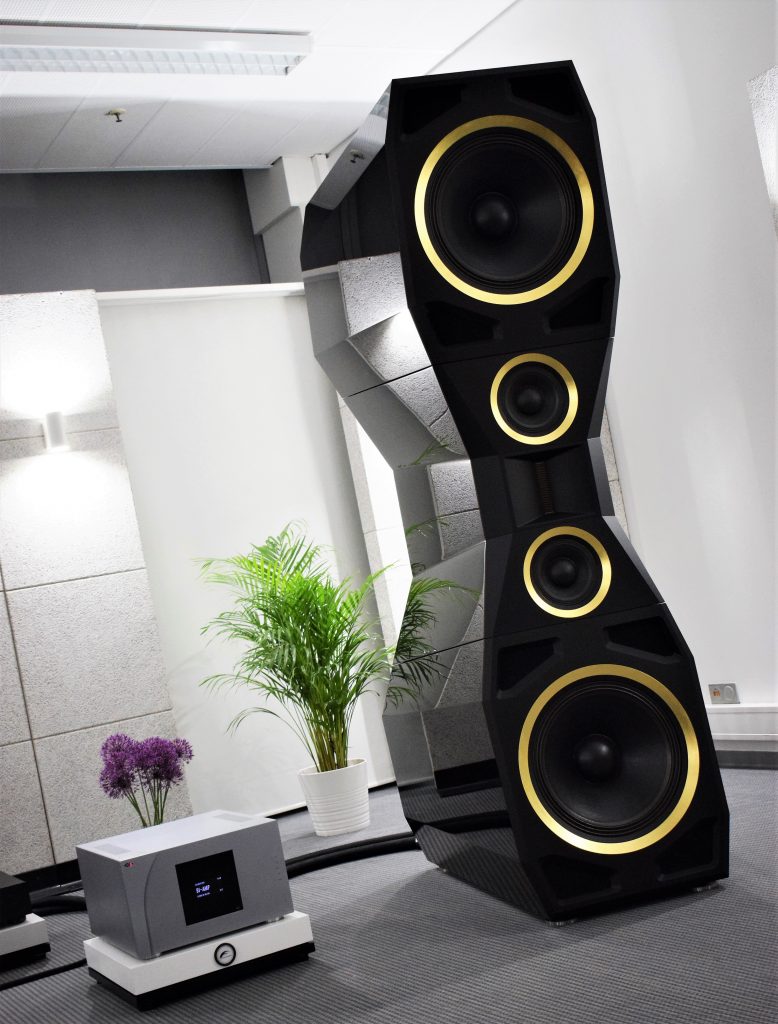
The more softly and elegantly shaped Estelon Extremes are much slender than the Goebels, and have the clever feature of being able to grow from 177 cm to 207 cm just by the press of the remote’s button. If a man from Mars asked me what the Munich Highend Show is all about, I might show him this image.
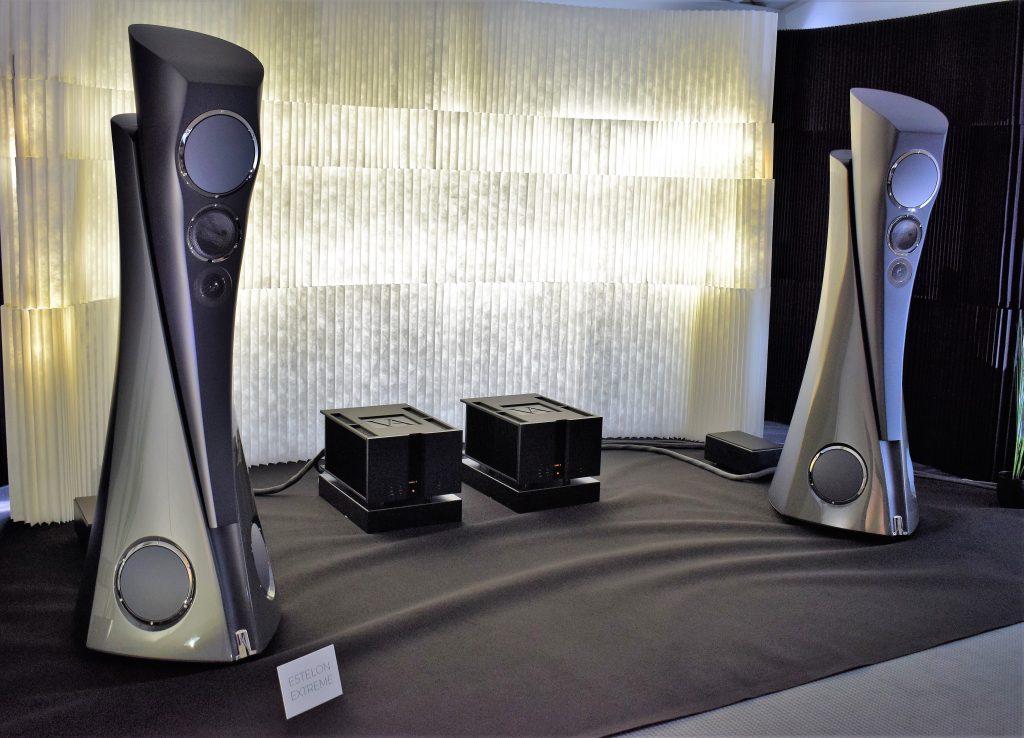
Von Schweikert Audio’s new stupefying flagship model Ultra II is 230 cm high, and according to the manufacturer is down only 2 dB at 16 hertz. Of course, that is not the only positive feature of the speaker.
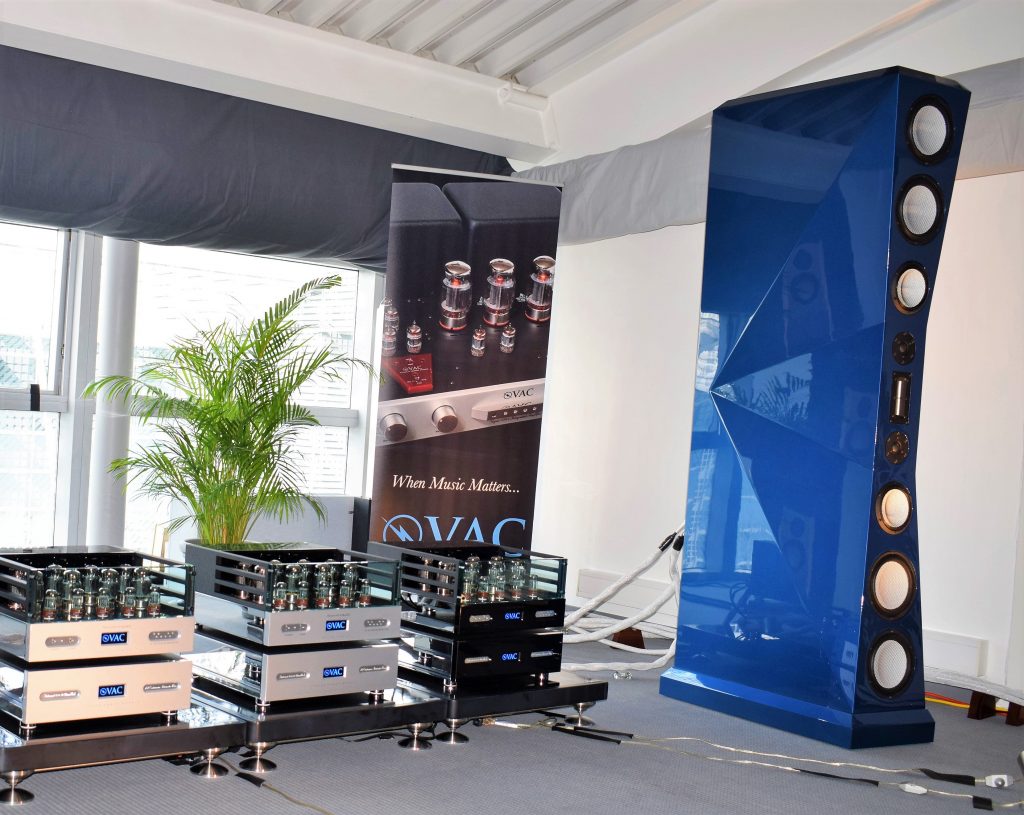
Yet another loudspeaker that there is no need to look down the nose: Albedo Audio’s flagship model Atesia.
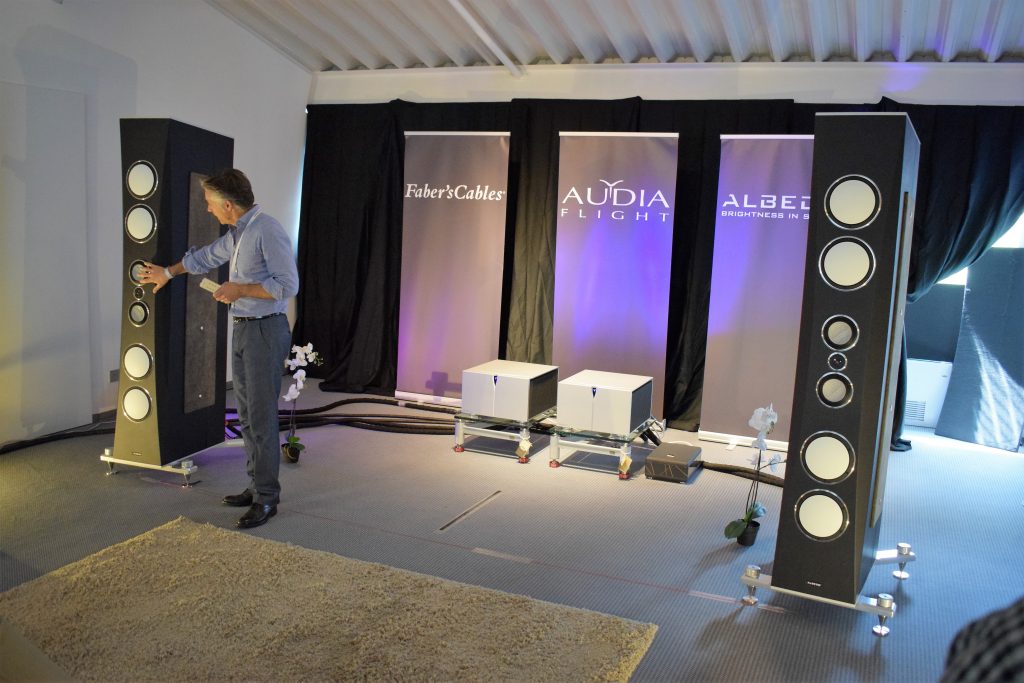
Soulsonic claims its 240cm tall Hologramm-X is the biggest passive loudspeaker in the world. Well, it depends of the definition. I’m sure there are still bigger ones but there’s no denying that unless the guys in the pic aren’t that tall, the Hologramm-X is indeed a true giant.
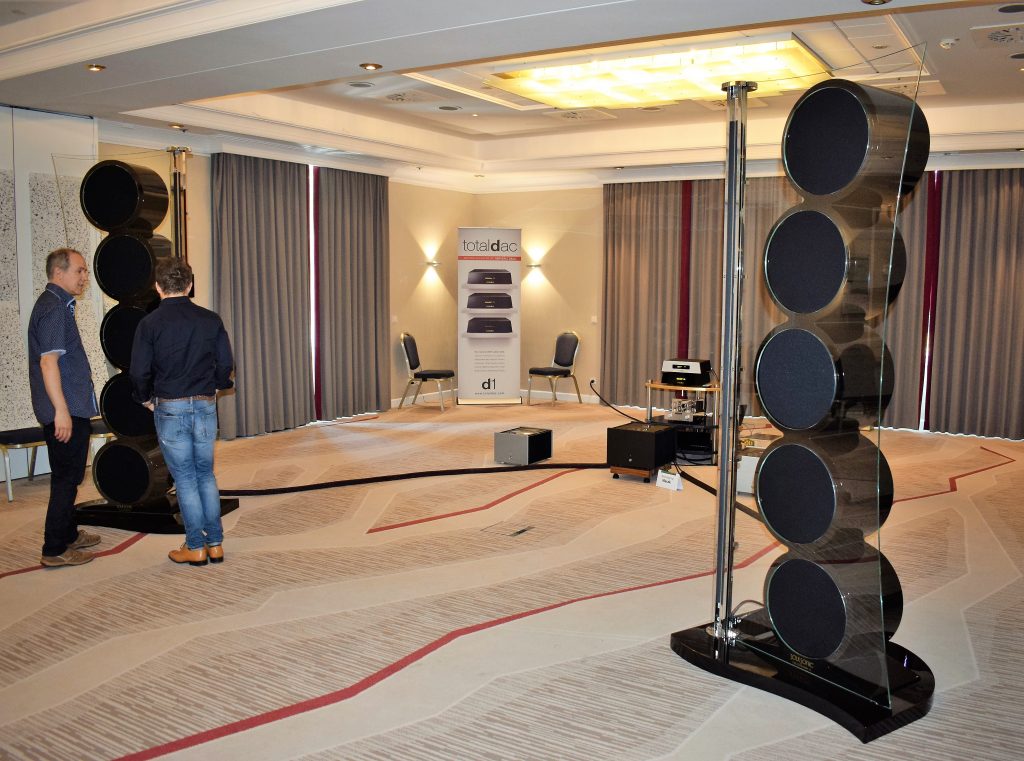
Reasonable ones
Megalomania self-evidently belongs to this hobby, and that’s fine. The size is sexy no matter from what angle one looks at it. The size is sexy e.g. when it’s part of more minimalist and compact designs, in which case the sex appeal originates from the manufacturer’s technical ability of making the best out of a cabinet that is not meant to impress physically but by its inner qualities. A good example of this was the re-heated L100 by JBL (Mark Levinson’s electronics). Not necessarily the most glorious sound at the show, but so heart warming looks and presentation. Best vibes of the Show? Perhaps.
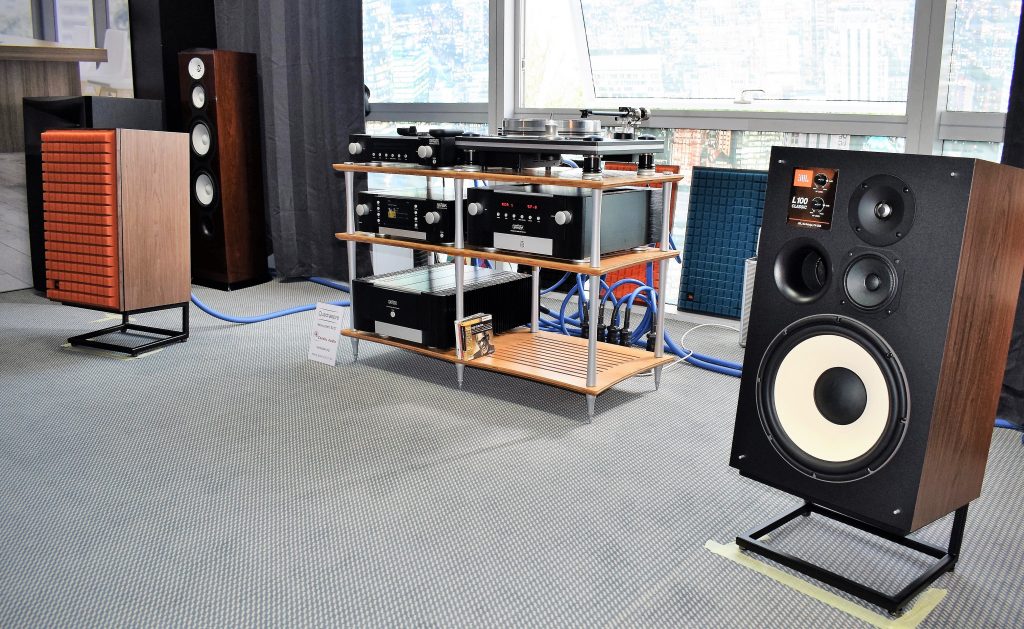
The same held true of Harbeth’s flagship M40.2 loudspeaker, this time accompanied by the Magnum Dynalabs. Not perhaps the most shining combination, but one that was so pleasant and hustle-free to listen to in the midst of all the hurry.
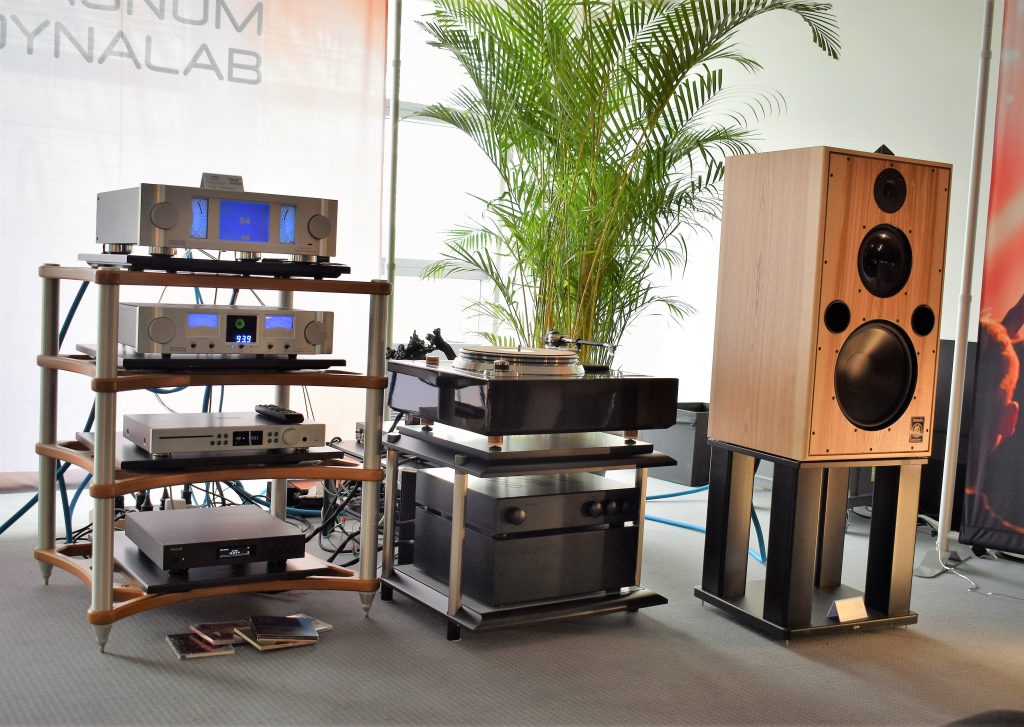
So simple, so elegant: the new Manger P2 with its special drivers, dual passive radiators on the rear side and the sturdy cabinet. At the Munich show, rooms like this are for calming down, meditation, quietly focusing on hearing special characteristics of the music. Easily evokes the question: What else is needed?
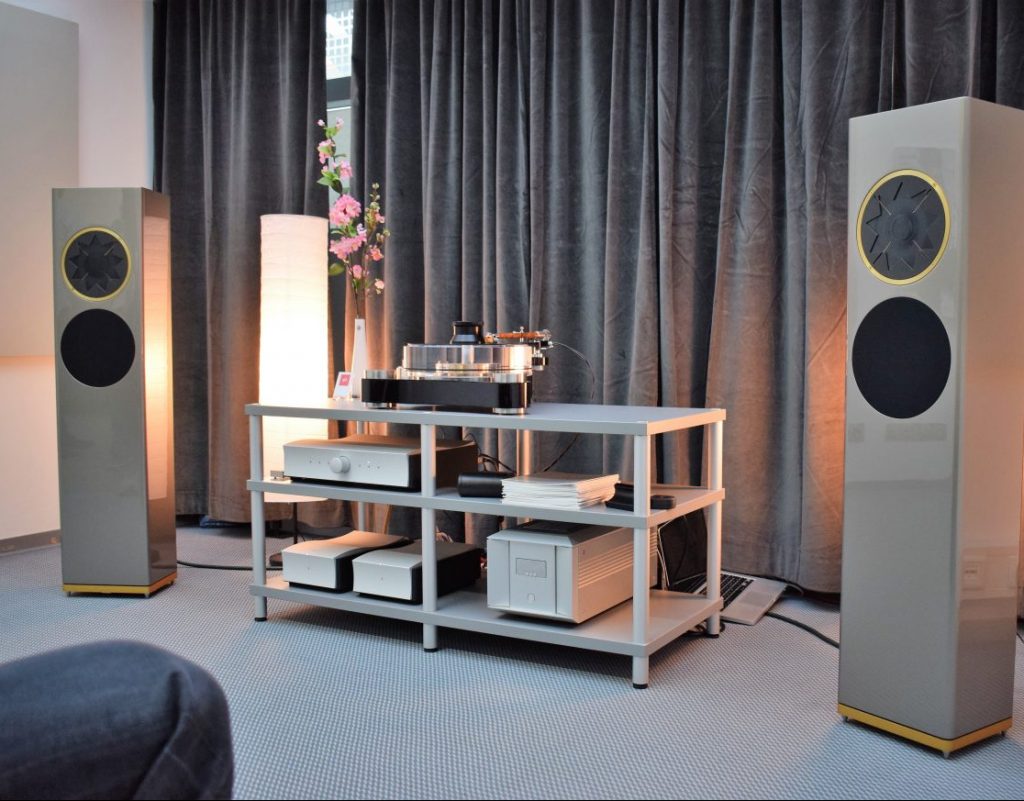
Also reasonably sized but a more engineer-minded project is the Kii Audio’s Three, and its new bass stand BXT, adding 16 more drivers and 7000 more amplifier watts to the whole. A very competent, universal and controlled sound.
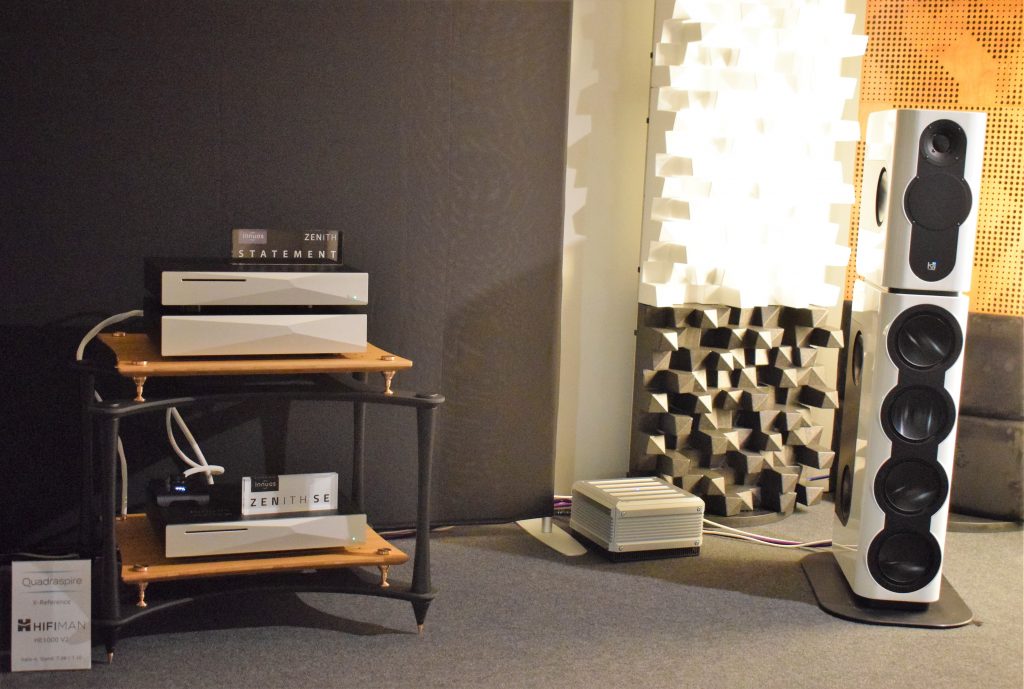
I’ve heard Magicos playing on a number of occasions at various public venues but never under more controlled circumstances. Nevertheless their speakers have always left the impression that something unusual is going on … in the positive sense of the word … without knowing what property exactly (cabinet, drivers etc.) the impression derives from. The same thing happened again this time with the new Magico A3. A truly high- level balanced sound with excellent imaging, one of the best.
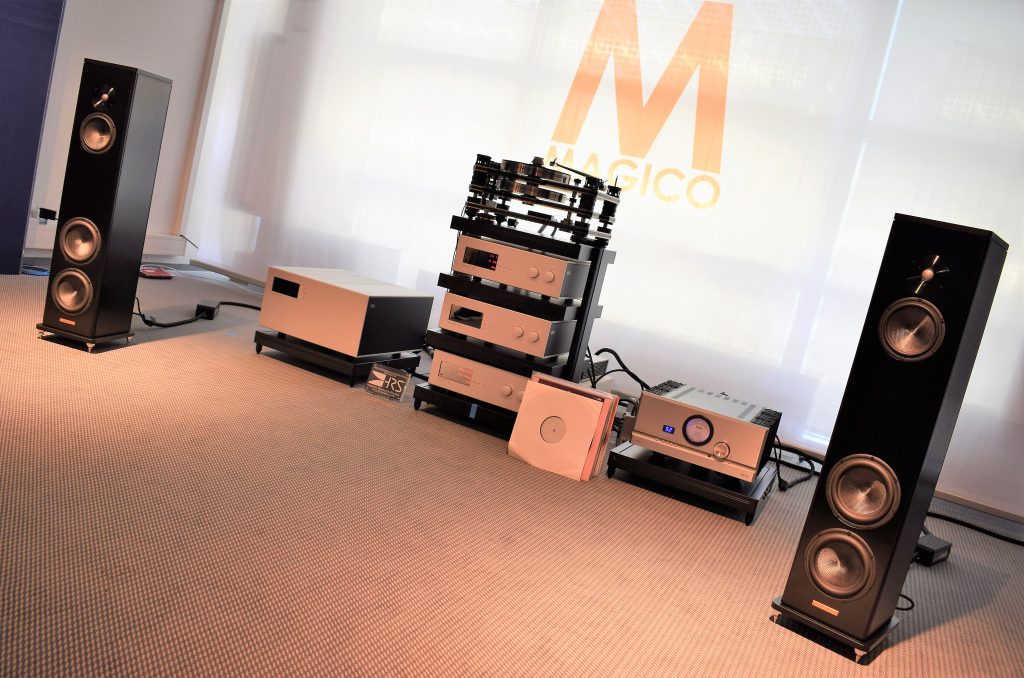
Amphion’s flagship Krypton is another universalist, i.e. able to reproduce any music systematically and with a certain standard. In some rooms the cardioid midrange may produce, not wrong, but cleaner than life type of sound but in a room like this one, the very same quality adds to the liveliness and purity of the sound. A good performance! 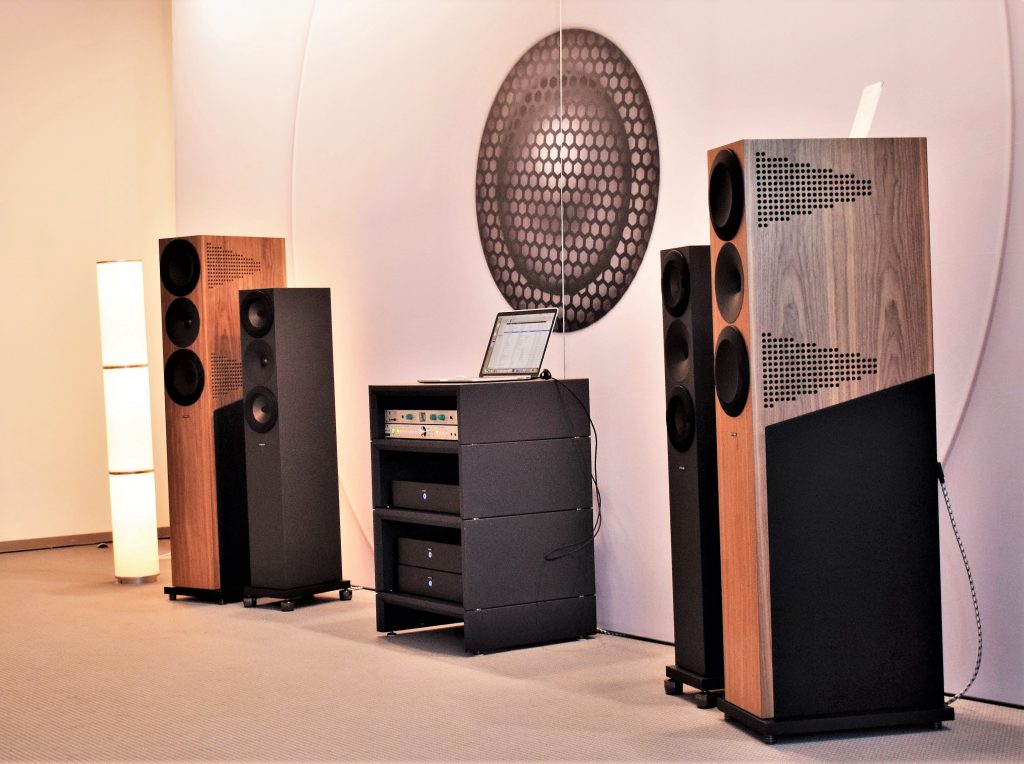
A system cannot become cuter than this!
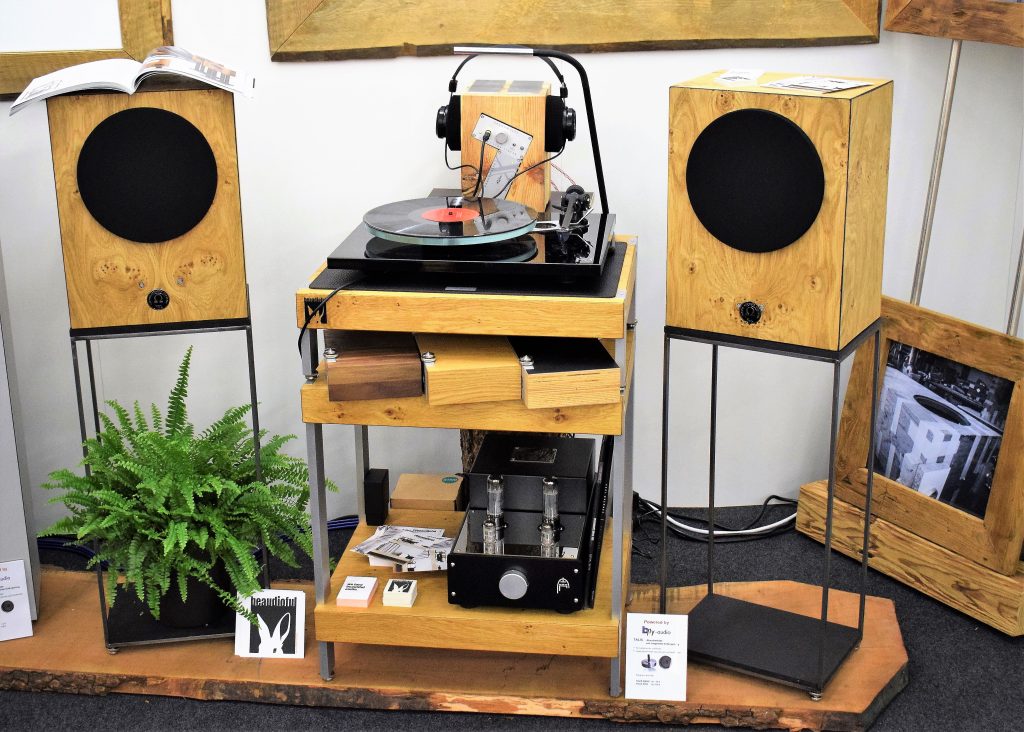
The most transparent
In the forefront: AER Loudspeakers’ Goldy and through it one can see the horn of their Jazz speaker. The Goldy is equipped with the tiny BBX unit, while the Jazz sports AER’s widebandwidth driver.
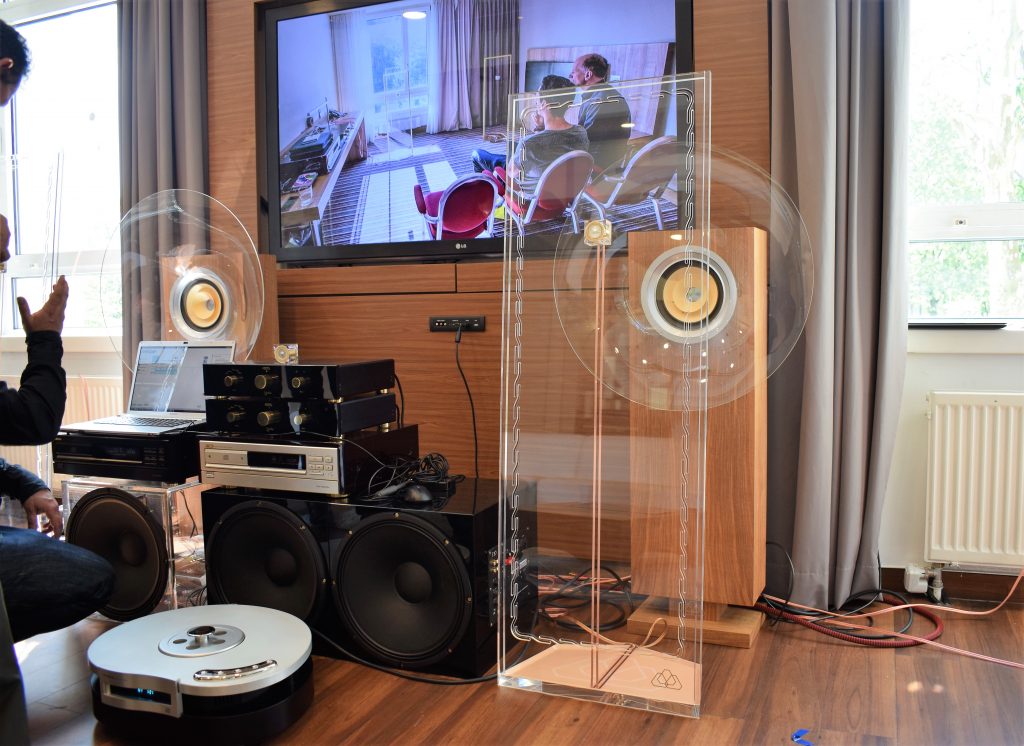
The acrylic BBX drive unit is just a small cube vibrating with the help of a sound exciter and tweeter mounted in the center. The operation is controlled with the BBX audio processor. The unit has a wide frequency response relative to its size and a surprisingly intelligent tonal balance. Well done!
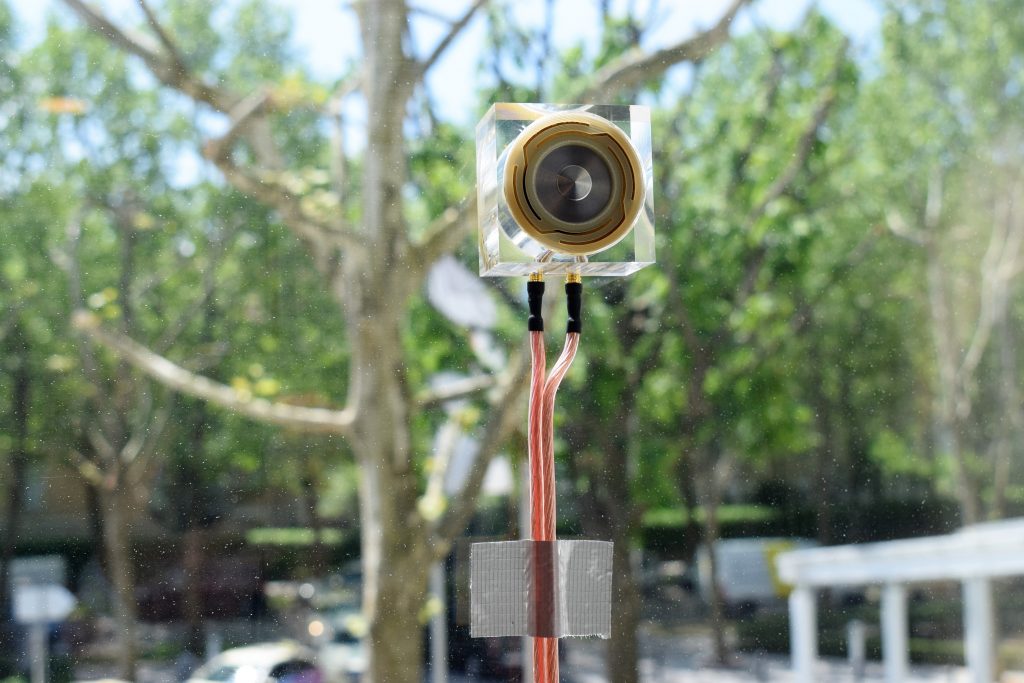
Widebanders
Arcadian Audio’s 220cm single driver Pnoe SE sports horn loaded AER’s MD3B or BD4 drivers. With such a long horn the over 100db sensitive speaker is able to make 35Hz live. Not an easy concept theoretically or practically but judging from the sound quality, the manufacturer has been able happily to address most of the potential problems. A minimum of 3m of listening distance is recommended, and ideally, amplification by a 300B SET.
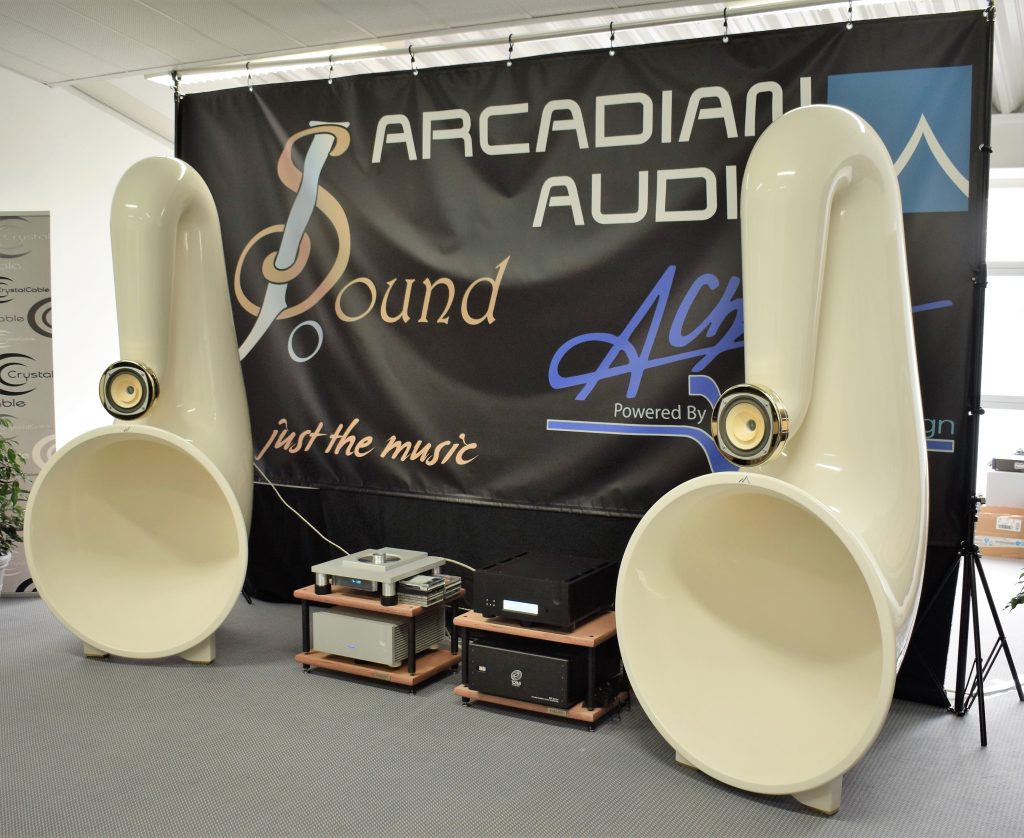
A widebander with a sub? Is that still a widebander? To this question Voxativ has responded by offering a new larger version of its Ampeggio speaker called Ampeggio X. More space is needed to install a new field-coil driver that together with the rear horn outputs more of the bass end.
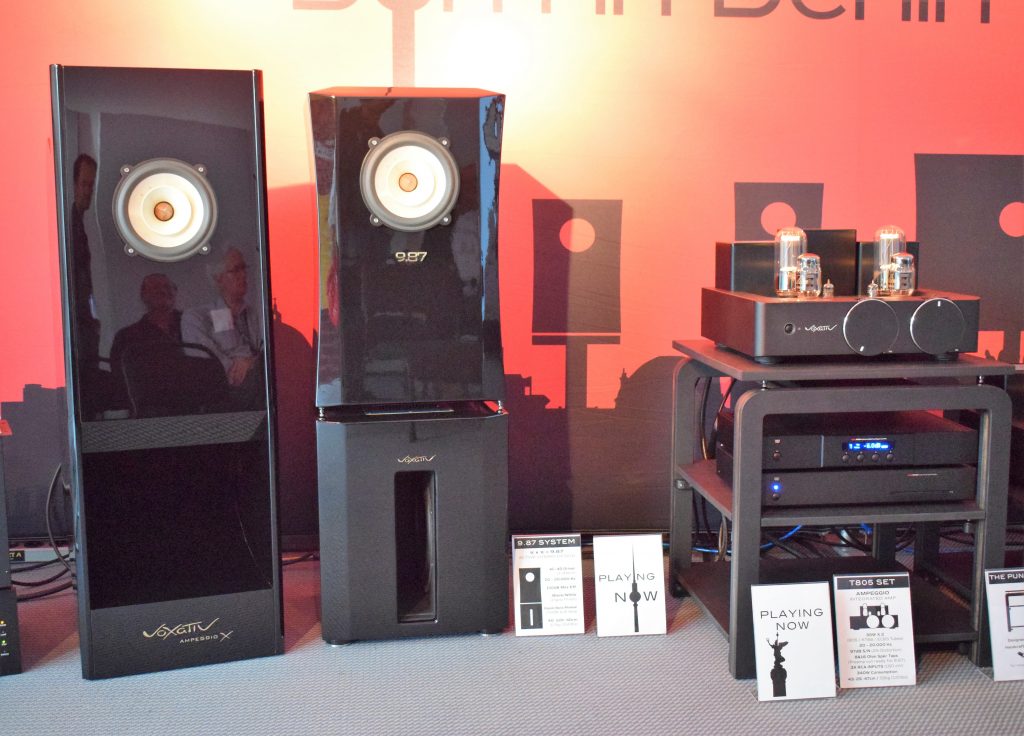
Audium Visonik’s speakers also make use of widebandwidth drivers but integrates them with a DSP subwoofer / crossover filter. That’s a possibility.
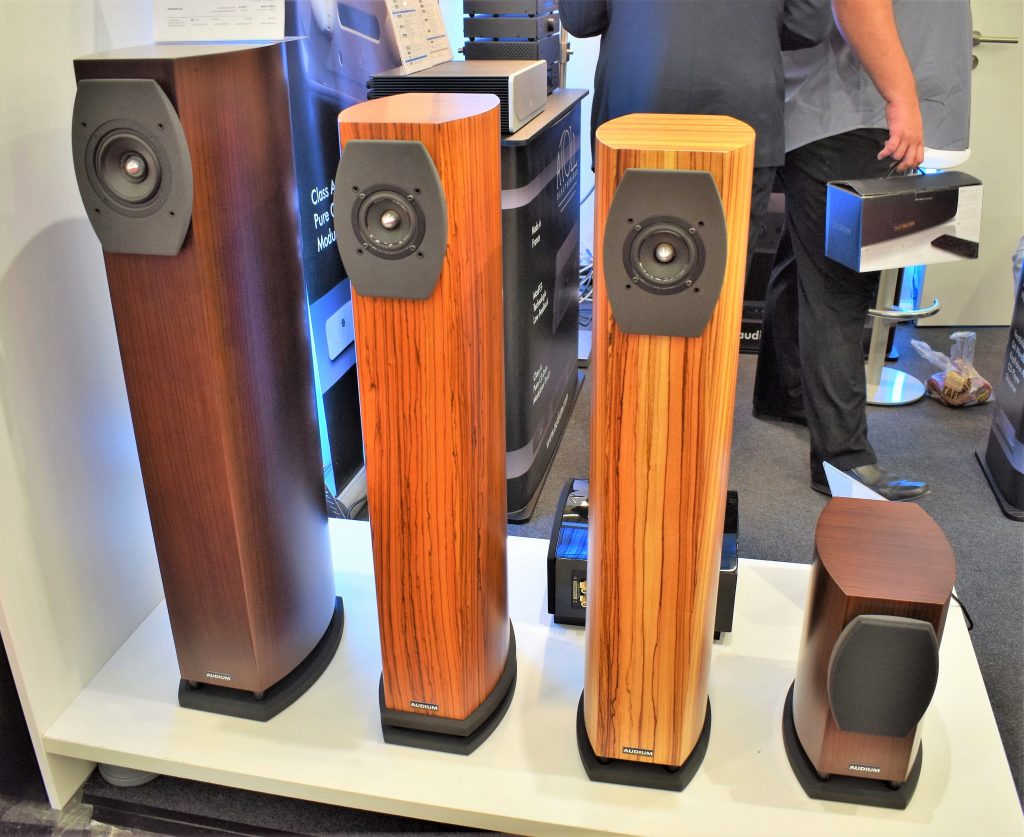
Horns
Famously, the only speaker type that can freeze out a quality widebander is a quality 4 – 5 way horn speaker. In Munich there is no shortage of such horn loudspeakers: Stein Music, Tune Audio, Avantagarde (two big configurations) and dozens of others. The exotic looking horn system below is ESD Acoustics’ Dragon, a 115dB sensitive five-way with carbon fiber horns and field-coil motors. Decorative DACs, active filters and Class A amplifiers are also hand made by the ESD Acoustics.
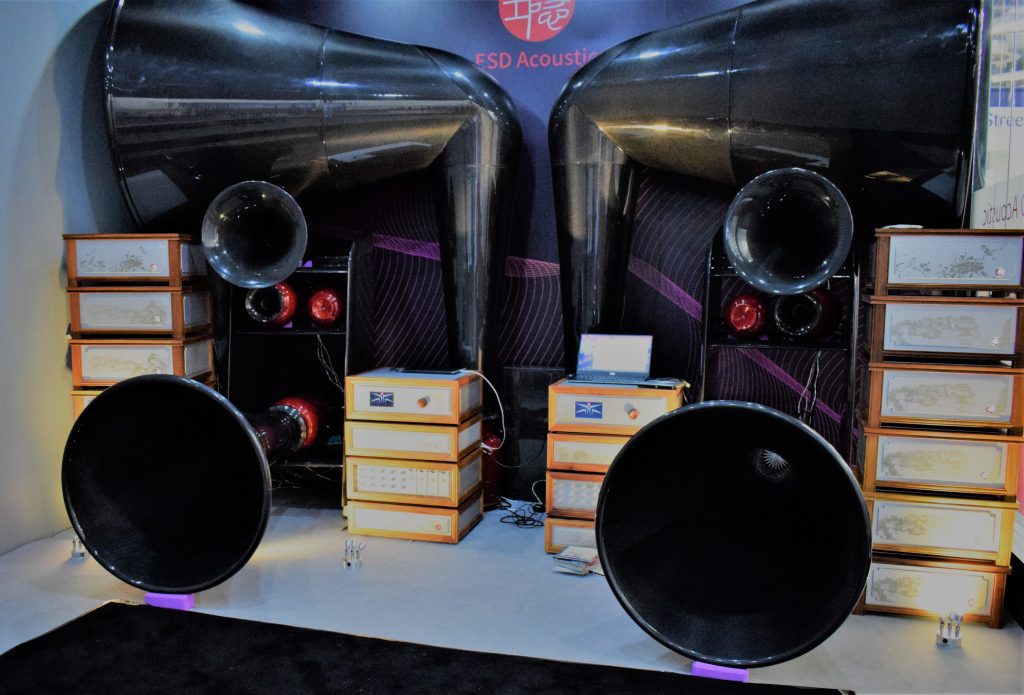
Living Voice’s grand horn speaker system is always one of the highlights of the fair. This time too.
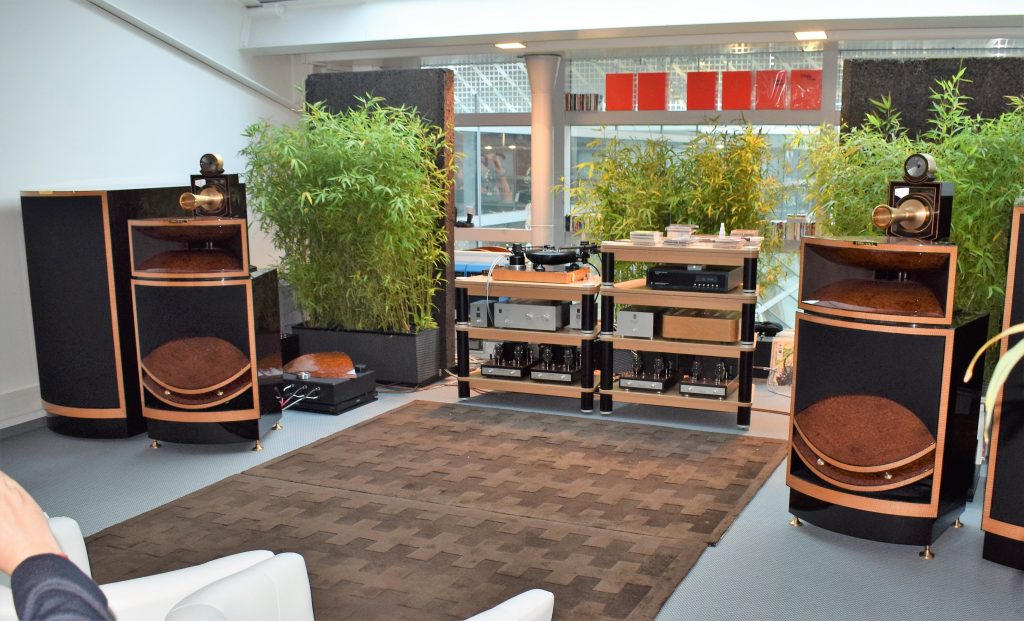
The multi-way horn speakers are now popular but the thing is that they never disappeared, not even in the 1980s and 1990s, in Japan and France (to some extent Germany). Below is Cessaro Horn Acoustics version of the very old concept.
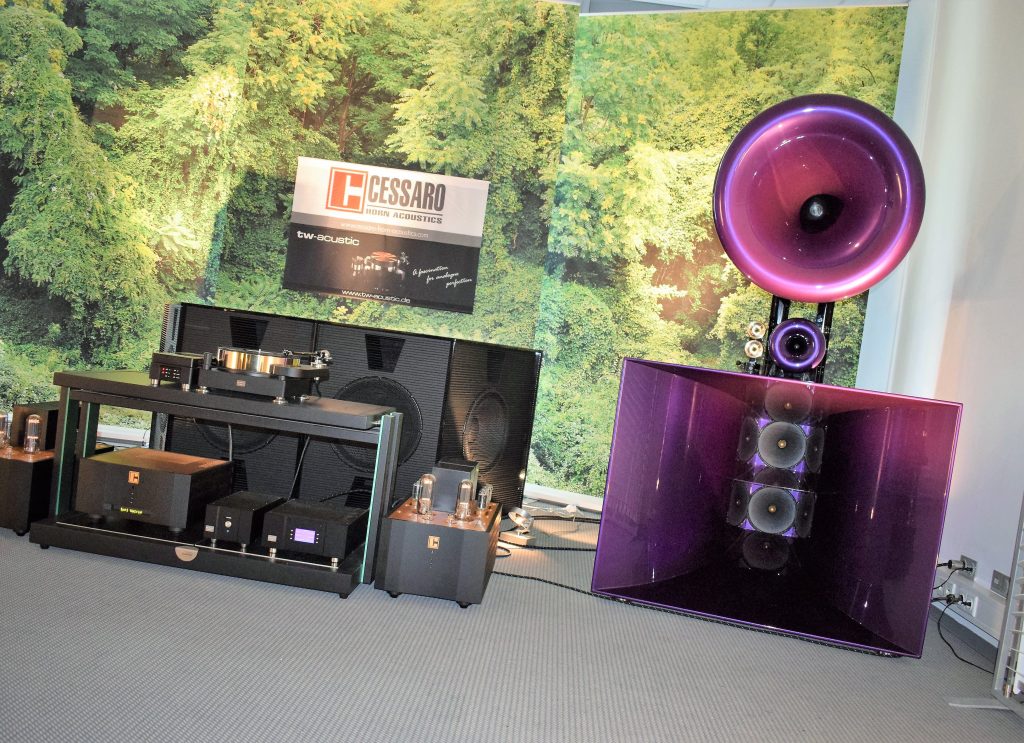
And yet another one in the Viva’s room (HiFi Deluxe).
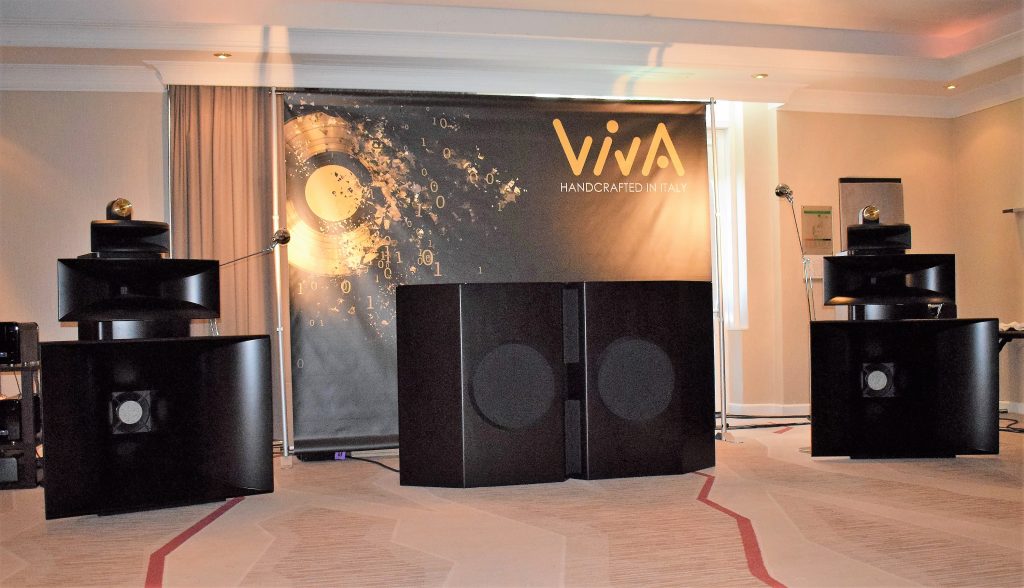
If space is limited one can try another idea from the mid 1930s: a two/three-way horn speaker in which the bass and the lower midrange is handed over to one or two dynamic woofers (12-18 inch) and crossed at 380, 500, 800, 900 or 1200 Hz depending on the horn used. Here’s Cessaro’s take on the issue.
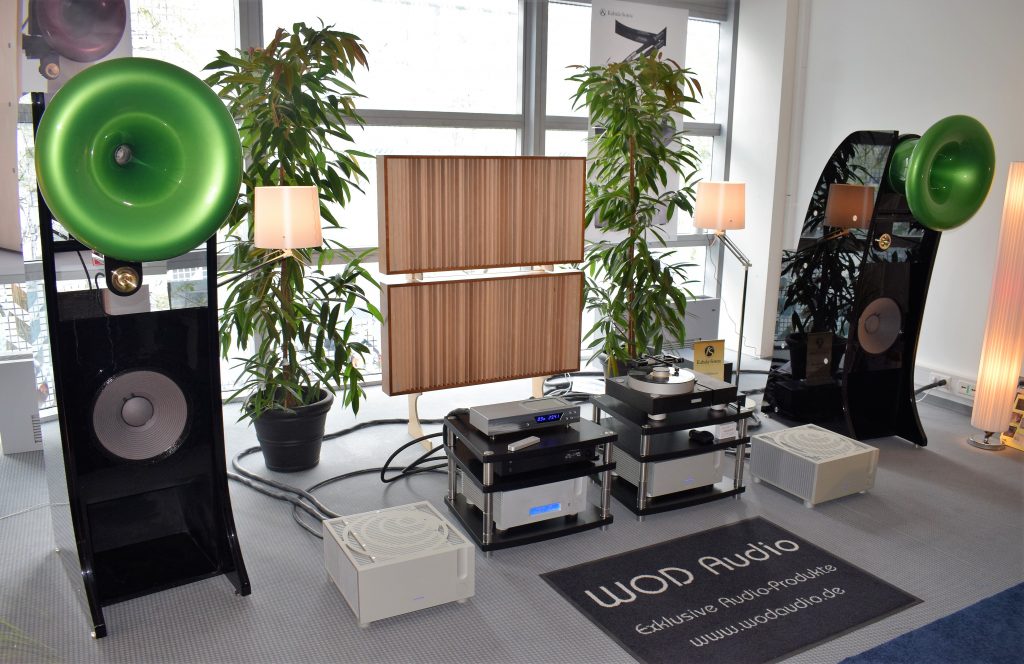
The stripped down version of their Universum speaker by Horns, Poland.
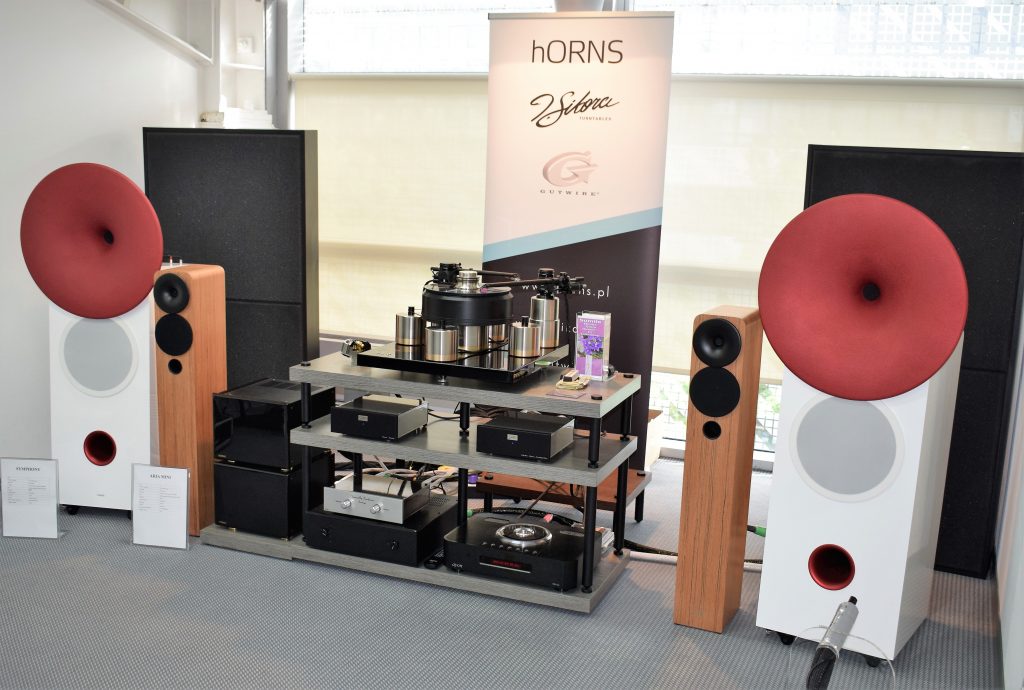
Acapella’s new Campanile 2 sports, in addition to its plasma tweeter and the aligned mid-range horn, six 10-inch woofers. And sounded great!
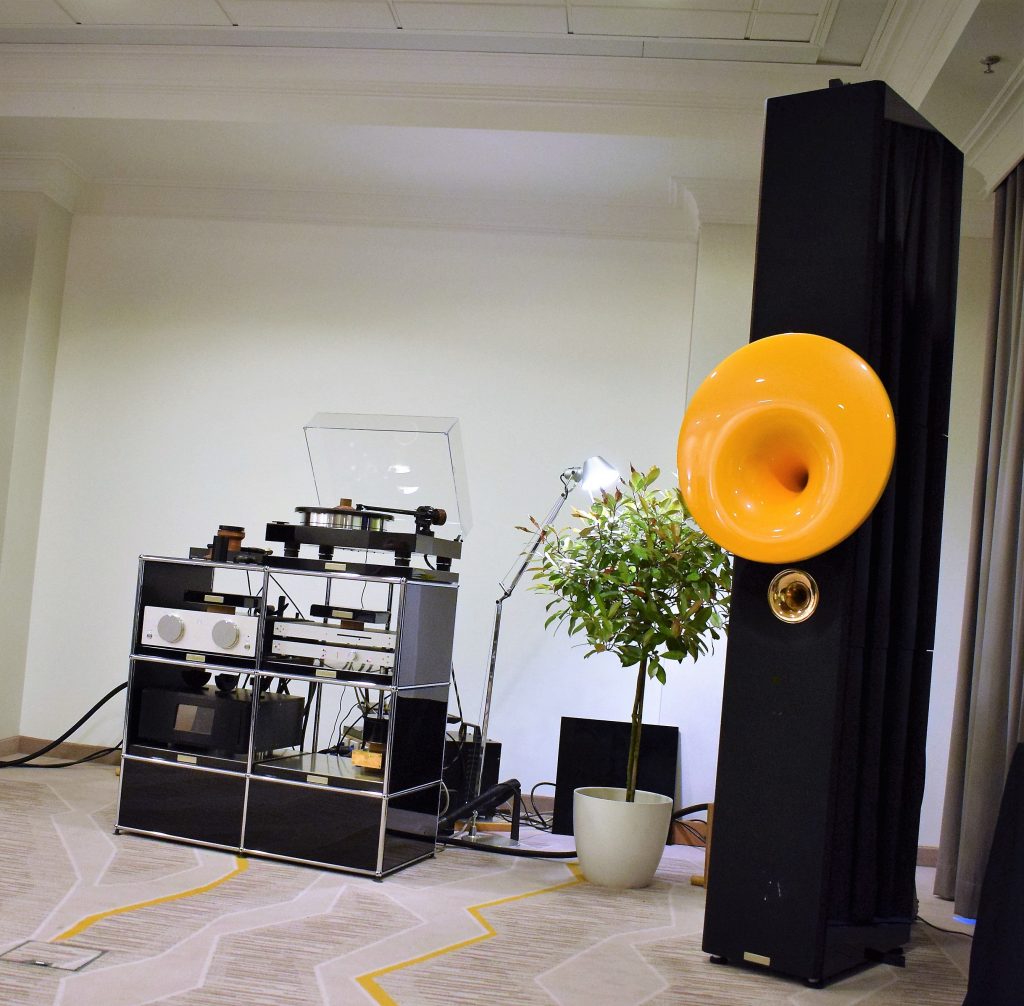
J.M.F. Audio’s “small” horn speaker carries a 16″ woofer (neodymium magnet and carbon fiber cone), a controlled dispersion horn driven by the JMF Audio’s compression driver (vaporized Beryllium dome). A classic design.
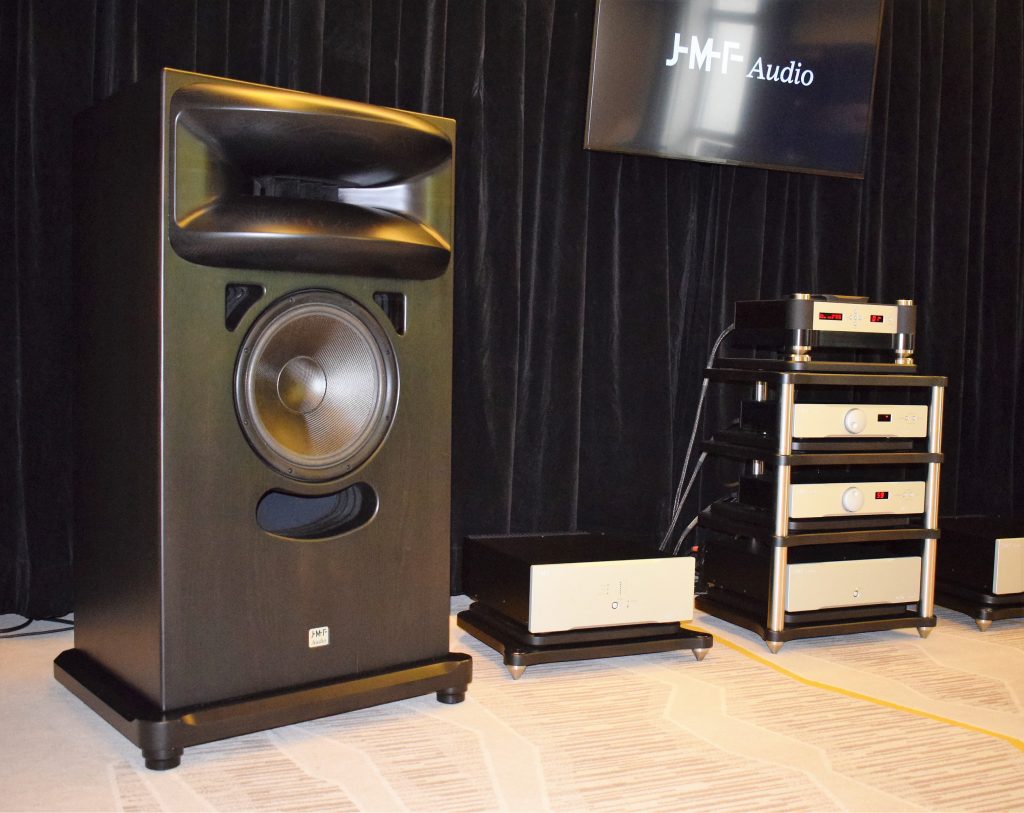
Two such horn speakers by Western Electrics. The one on the right is the famous Western Electric 757: 728B woofer & 713C driver/KS-12027 horn. Unique realism!
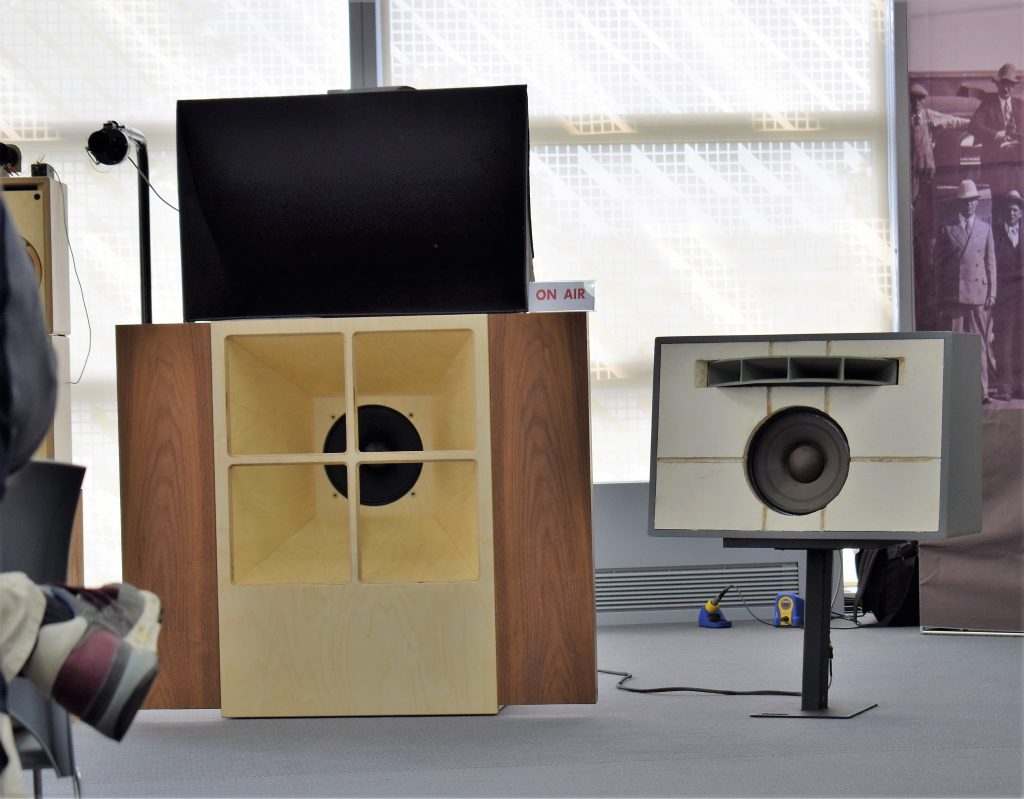
The H-frame woofer cabinet of this horn speaker (Azzolina Audio) is a replica of the Western Electric WE 7331-A. The horn too looks like a WE horn made by Line Magnetic.
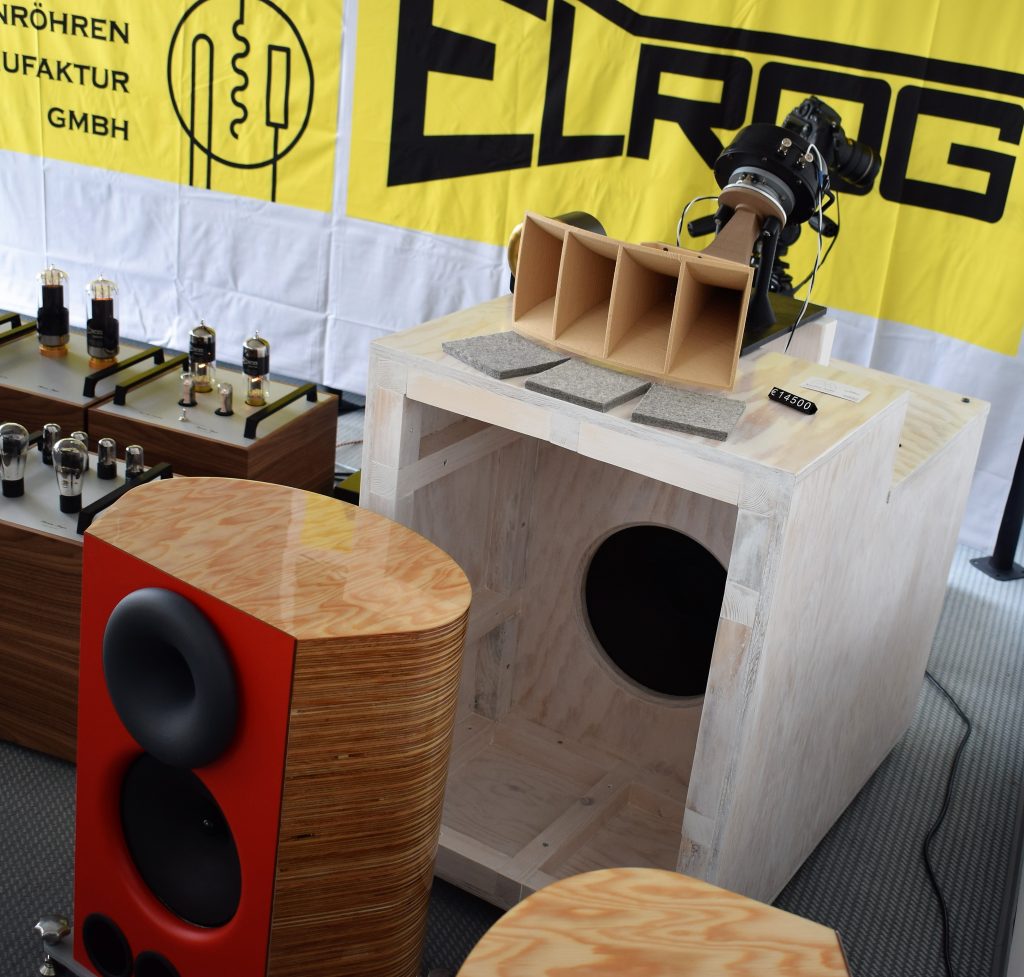
Exotics
Room for inventiveness: the Curante by the Hungarian Bayz Audio. The secret of the speaker lies in the patented cylindrical BRZ (Bayz Radial Speaker) element and in its phase coherence, excellent impulse response and low distortion. Unfortunately I didn’t hear their demo at the HiFi Delux.
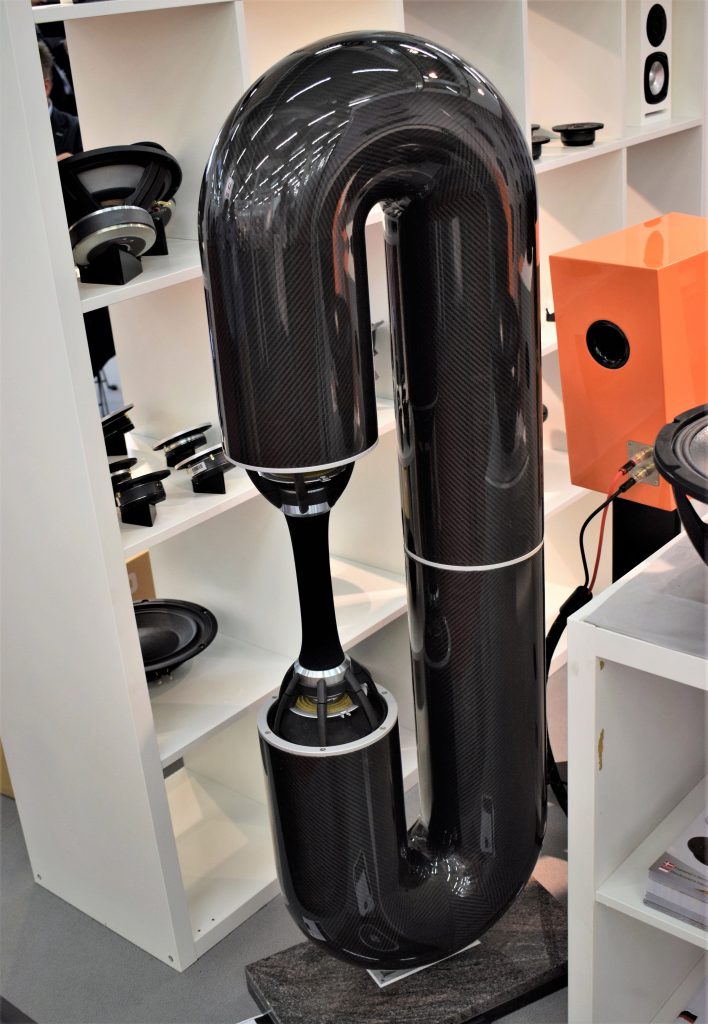
Pancini’s or Panc Art Technology’s first product is the 216 kg VZ1 speaker. Remotely resembling the B & W’s Nautilus, the VZ1 is a 88 dB sensitive 4 ohm 4-way (42Hz-24kHz / -6 dB). Will appeal the friends of the Barcelona chair.
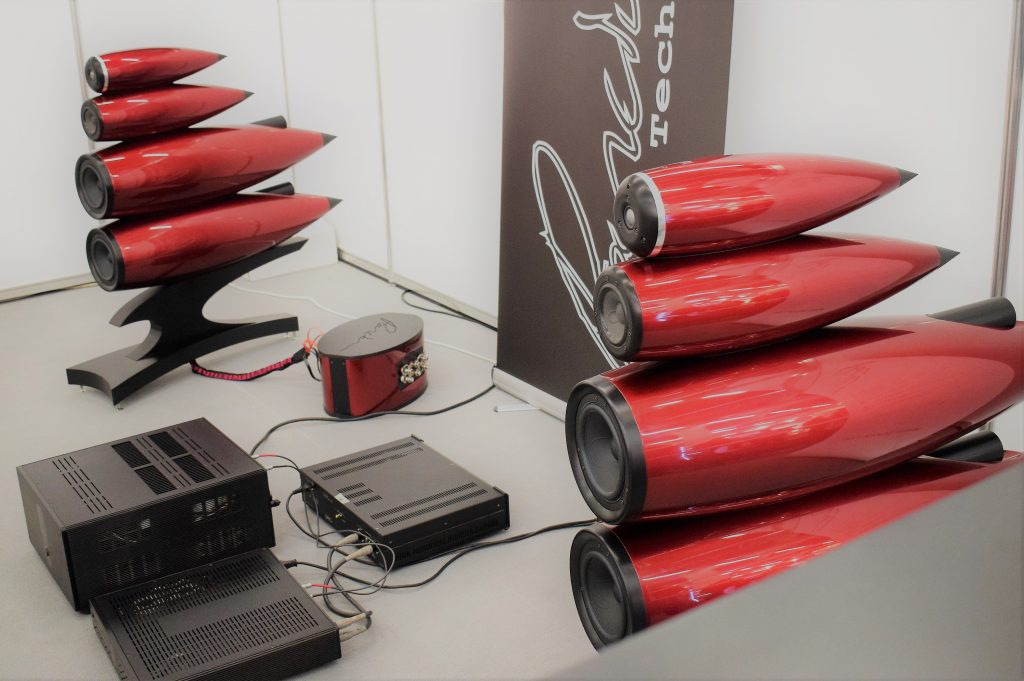
TAG McLaren’s aerodynamic Audiolab F1 is smoothly shaped.
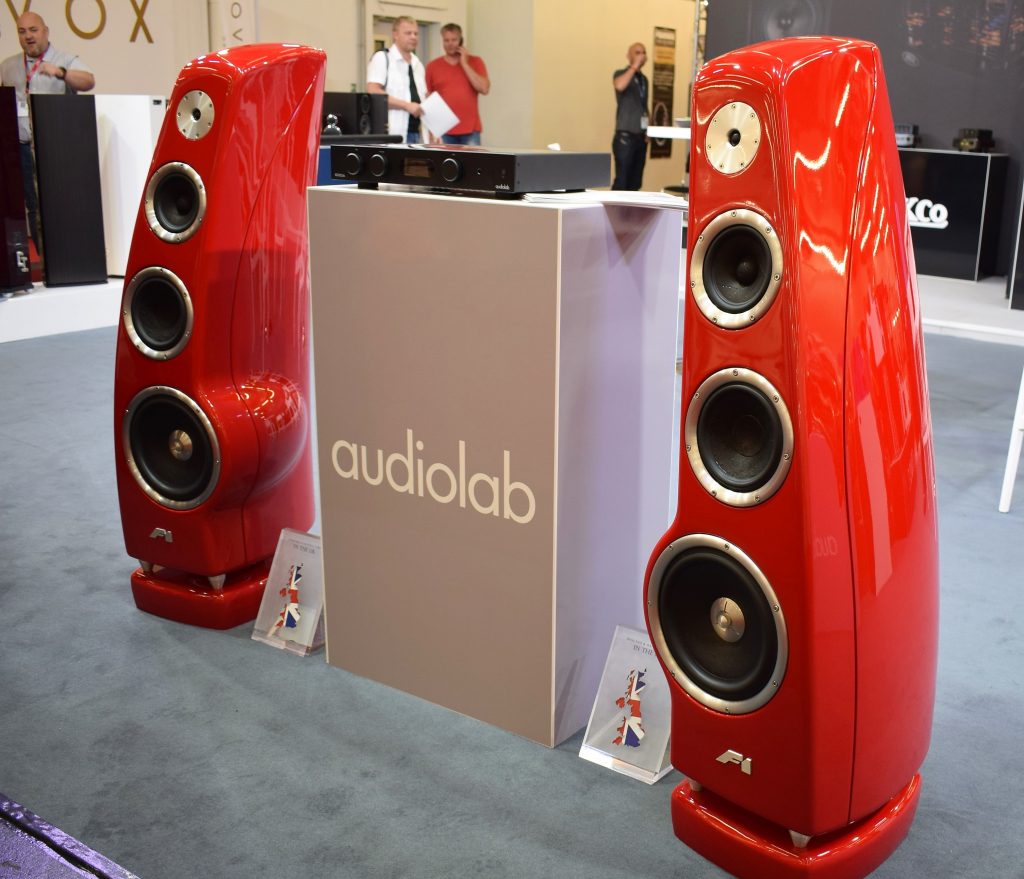
BIS (Best in Show)
Not really. Doesn’t make any sense. I liked many of the systems presented above but also many others that aren’t. Generally speaking, even though I personally come from the widebander / horn camp, I couldn’t but admit that there were several multiway dynamic systems that were able to deliver first-class performance, a very pleasant and competent sound. Such was available, for example, in the FM Acoustics’ room. Don’t know whether the source was a CD player or their Vertere turntable or a tape recorder but the opera recording sounded simply magnificent! The speakers were the bi-amped 5 way SX1-C (the one in the pic is their smaller 4-way SX3-C).
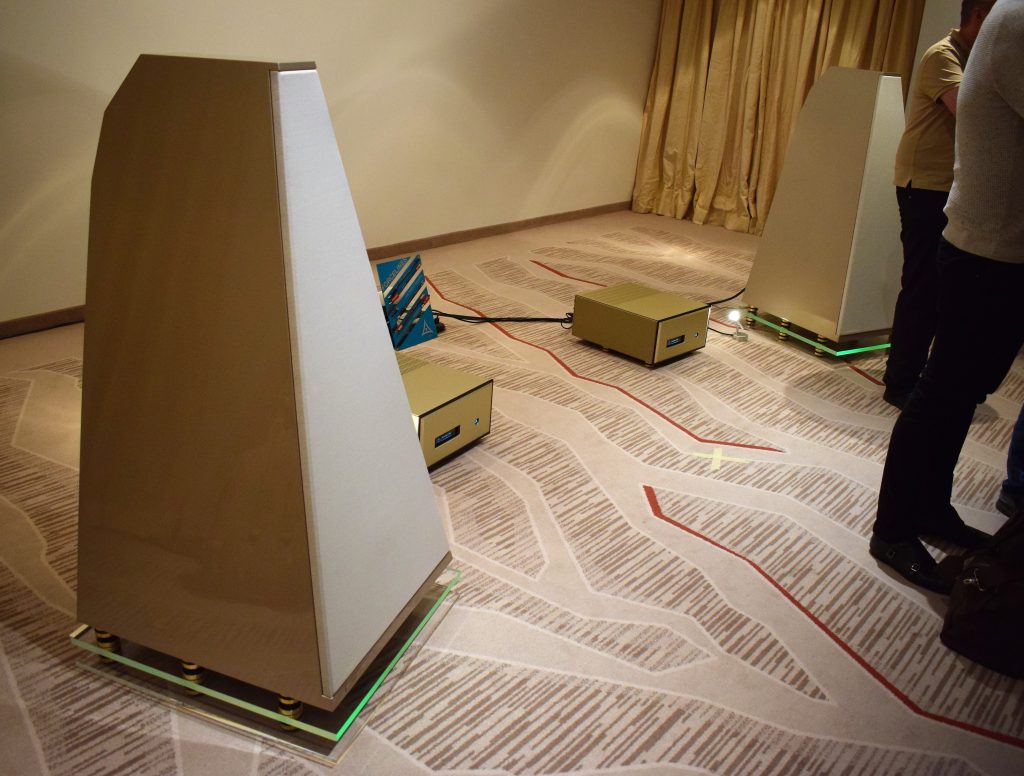
The same was true of the system with the top Quad electrostatics together with Luxman amps, nothing new, just sleek conventional HiFi, not my first choice exactly, but with a strong and secure performance, both from the digital and analog source.
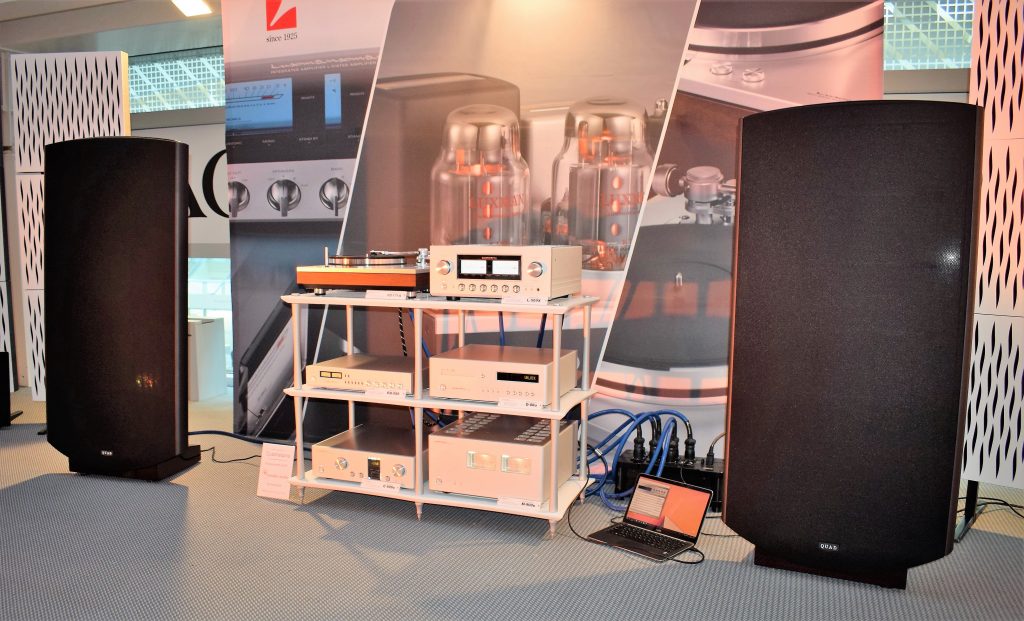
Yet another unlikely but great sounding system: the TAD room.
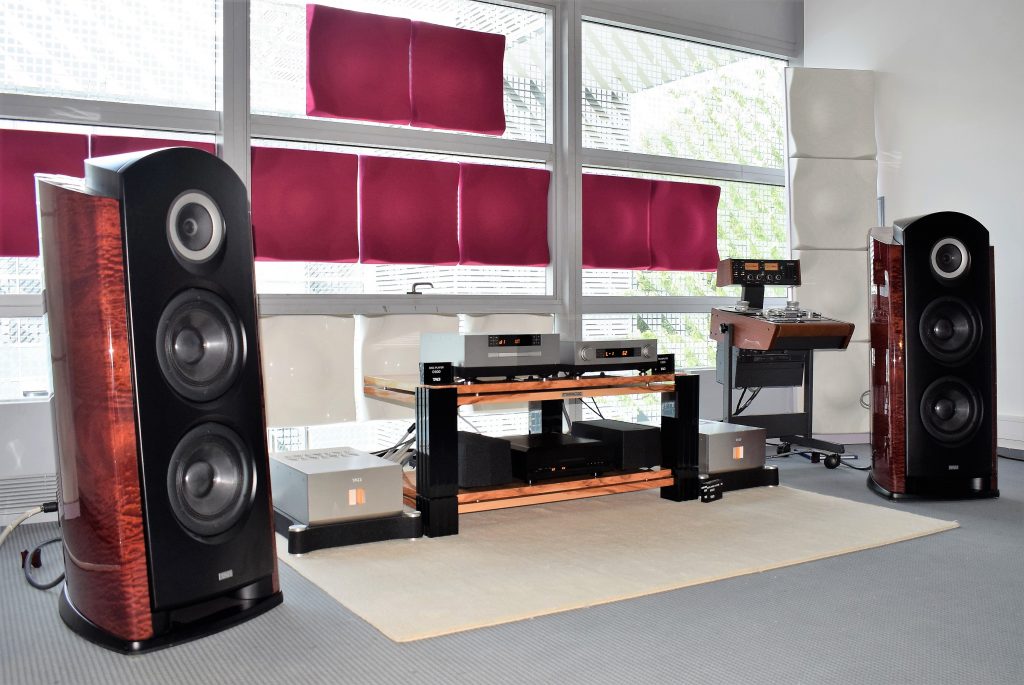
The Klimo system with their brilliant turntable/arms, and the row of electronics, took me back to my youth when I bought my first Paolo Conte LP.
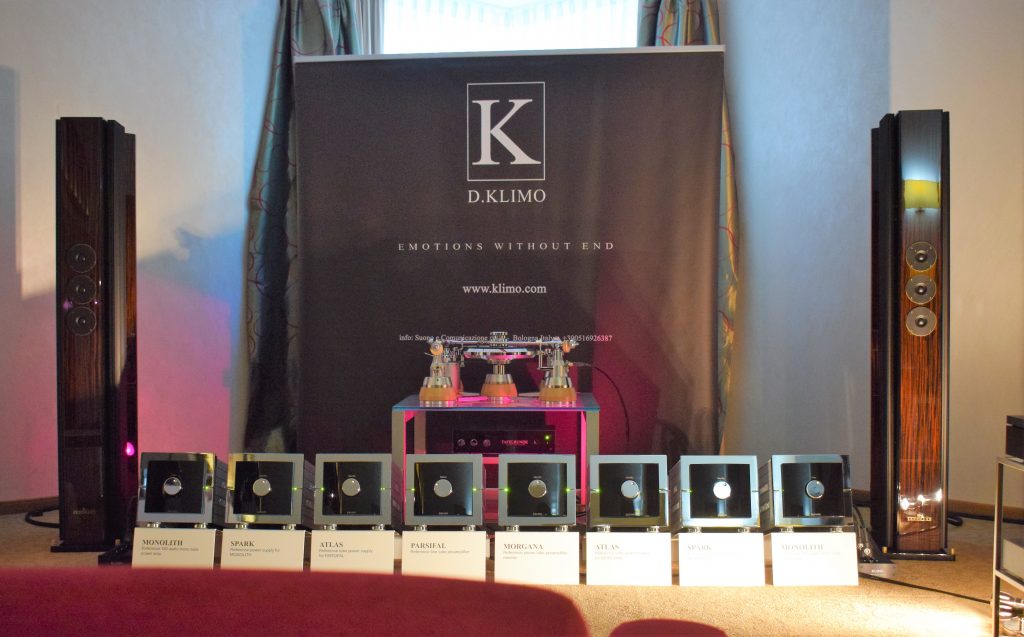
Among the many super sounding systems, it is fair to say, there was one that this time left the most lasting memory: the Audio Vec’s Diva XL loudspeakers from France, lubricated with Jadis amplification. The Diva XL is a 3-way with the 40 cm Duo-Pole unit (a kind of AMT element) in Dipole (open back) operation between 200 – 20000Hz, the ribbon tweeter for frequencies above 20kHz, and two 15″ woofers in a sealed cabinet for the bass (down to 14Hz). A very realistic performance with concrete bass and natural, non-artificial but still revelatory midrange. A true world-class sound and role model for others!
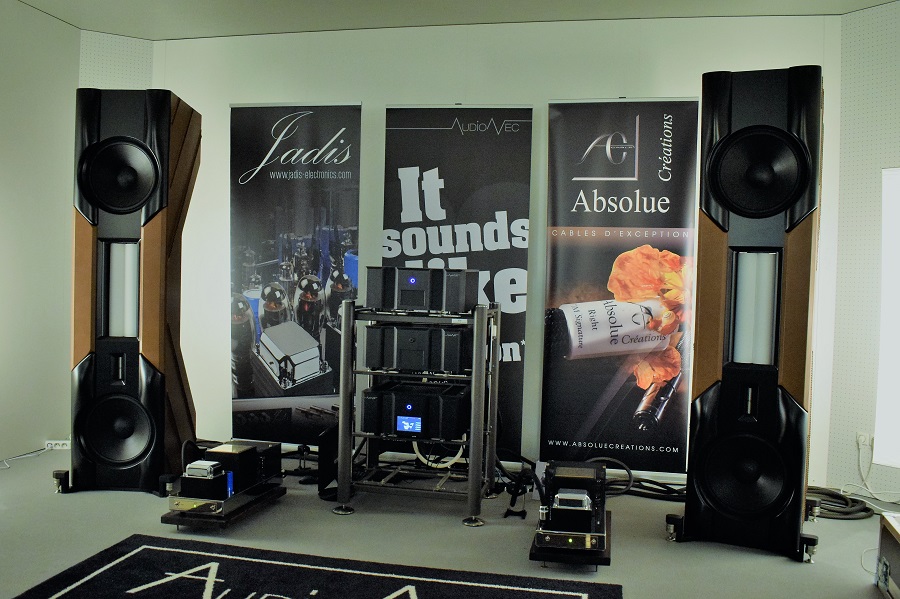
The wisest words of the Show? “Freedom. Spontaneity. Improvisation. And live recording.” I heard the words uttered in the MBL room, the idea being that what tells ordinary Baroque orchestras apart from the extra-ordinary ones, is that the latter possess the three first mentioned qualities, and if such an orchestra is then recorded live, as it should be, the performance can hardly be better. Fortunately, more and more modern Baroque orchestras, it seems to me, are following the advice.
